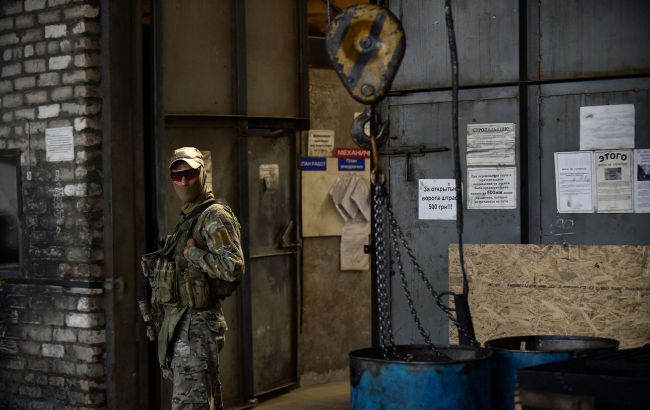Occupied regions in crisis: Just 30% of residents hold jobs, some paid in food
 Factory in temporarily occupied territory of Ukraine (Photo: Getty Images)
Factory in temporarily occupied territory of Ukraine (Photo: Getty Images)
The unemployment rate in the occupied territories is three times higher than in 1992. People are working for food packages instead of money, according to the National Resistance Center.
Only 30% of residents in the occupied Donetsk and Luhansk regions currently have jobs.
According to data from Ukraine’s Main Intelligence Directorate, cited by the center, more than three thousand enterprises in the temporarily occupied areas of Donbas have completely ceased operations due to the ongoing hostilities.
Production capacities are being moved to Russia or placed under the control of Russian companies.
Most of the population has been left without permanent jobs, forcing them into temporary, low-paid work, often tied to Russian structures.
According to local sources cited by the National Resistance Center, some people are forced to work on military-reconstruction projects - such as municipal services, the construction of defensive structures, or repair units subordinated to Russian military forces.
“Payment for such work is often delayed or given in food packages,” the center notes.
Additionally, some employees of enterprises closed by the occupiers are formally dismissed only on paper, so they are not counted in unemployment statistics.
“Thus, the unemployment rate in the occupied territories is three times higher than in 1992, and the standard of living remains catastrophic. Donbas, which Russia promised to “raise from its knees,” has turned into a zone of social decline, where survival has become the only “job,” the center reported.
How Russia is displacing Ukrainians from the occupied territories
Earlier, RBC-Ukraine, citing the National Resistance Center, reported that Moscow announced a large-scale program to resettle the occupied territories of Ukraine, presenting it as a return of residents.
In reality, under the guise of returning residents, the Kremlin is preparing a plan for the mass relocation of citizens from remote regions of Russia - from Yakutia to Buryatia. In practice, this means the Russification and gradual erasure of Ukrainian identity in the occupied territories.
New arrivals are given priority for housing, benefits, jobs, and material assistance, which encourages mass migration. According to Russian documents, these new residents are also intended to form the basis of administrative structures, local police, and self-government - essentially creating a parallel society entirely controlled by Moscow.
Additionally, Russian administrations in the seized territories have developed a scheme to financially support local collaborators under the guise of agricultural subsidies. According to the NRC, payments are being made for growing potatoes and vegetables. While officially framed as support for agriculture, these payments are actually aimed at incentivizing loyalty to the occupation authorities.

